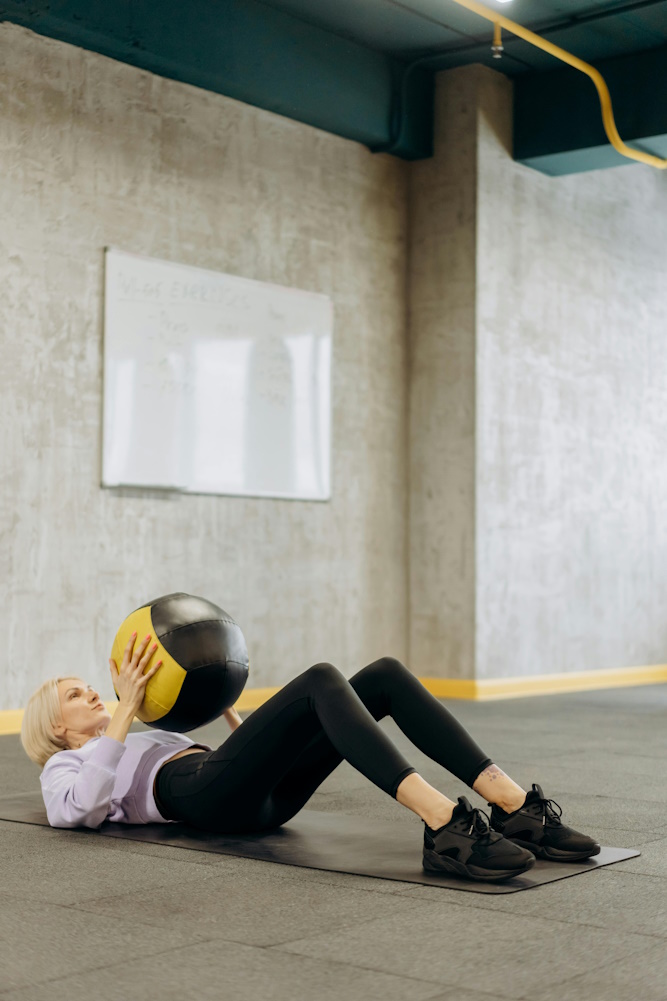Crafting effective Pilates challenge workouts is a dynamic process that combines creativity, knowledge, and an understanding of individual fitness levels and goals. These workouts are designed to engage and strengthen your core, improve flexibility, and enhance overall physical well-being. In this comprehensive guide, we’ll explore how to make Pilates more challenging, structure a Pilates workout, gradually build up to advanced exercises like the Teaser, and understand the workings of a 28-day wall Pilates challenge.
How Can I Make Pilates More Challenging?
To make Pilates more challenging and elevate your workouts, consider the following strategies:
1. Increase Resistance: Incorporate resistance bands, Pilates rings, or small hand weights into your routine. These accessories add resistance, intensifying the workout.
2. Progressive Sequencing: Gradually advance from beginner to intermediate and advanced exercises as your strength and proficiency grow.
3. Reduced Rest: Shorten the rest intervals between exercises to keep your muscles engaged and your heart rate up.
4. Modify Positions: Experiment with more challenging variations of Pilates exercises, such as leg lifts, side planks, or advanced variations of the Hundred.
5. Vary Speed and Repetitions: Adjust the tempo of your movements, incorporating slow and controlled motions for muscle endurance and faster sequences to challenge coordination.
6. Combine Exercises: Create fluid, flowing sequences that combine different Pilates exercises to challenge multiple muscle groups simultaneously.
7. Focus on Balance: Incorporate exercises that challenge your balance, such as single-leg stretches or tree pose variations, to engage your core and improve stability.
8. Incorporate Props: Utilize props like stability balls or foam rollers to add an element of instability, engaging more muscles and improving balance.
How Do You Structure a Pilates Workout?
A well-structured Pilates workout typically follows a systematic approach that includes the following components:
1. Warm-up: Begin with gentle warm-up exercises to prepare your body. This can include deep breathing, pelvic tilts, and stretches.
2. Mat Work or Equipment: Depending on whether you’re doing mat Pilates or using equipment like a Reformer, progress through a series of exercises that target different muscle groups.
3. Core Emphasis: Pilates always emphasizes core engagement. Include exercises like the Hundred, Plank, or the Saw to challenge your core strength.
4. Flexibility: Incorporate stretching exercises like the Swan or the Spine Stretch Forward to improve flexibility and release tension.
5. Cool Down: End the workout with a cool-down period, which may include gentle stretches and deep breathing to relax and restore your body.
6. Mindfulness: Throughout the workout, maintain mindfulness and focus on your breathing, alignment, and proper form.
7. Progressive Overload: As you become more proficient, increase the intensity of your exercises gradually to ensure continued progress.
8. Variety: Keep your workouts fresh by introducing new exercises and routines to prevent plateaus and maintain motivation.
How Do You Build Up to Teaser Pilates?
The Teaser is an advanced Pilates exercise that requires a high level of core strength and control. Here’s a step-by-step approach to building up to the Teaser:
1. Foundation: Start with foundational Pilates exercises like the Hundred, Single Leg Stretch, and Double Leg Stretch to develop core strength and control.
2. Pelvic Curl: Practice the Pelvic Curl, which involves lifting your hips and lower back off the mat while engaging your core. This helps strengthen your abdominal muscles.
3. Rolling Like a Ball: Master the Rolling Like a Ball exercise, which involves balancing on your tailbone while rolling back and forth. This improves balance and core stability.
4. Modified Teaser: Begin with a modified version of the Teaser by keeping your feet on the floor and gradually extending one leg at a time as you gain strength and control.
5. Full Teaser: Once you feel confident and strong, attempt the full Teaser exercise by lifting both legs and torso simultaneously. Remember to engage your core and maintain proper form.
6. Practice and Patience: Building up to the Teaser requires consistent practice and patience. Take your time, and don’t rush the progression.
How Does the 28-Day Wall Pilates Challenge Work?
The 28-day wall Pilates challenge is a specialized program designed to enhance your Pilates practice using a wall for support and resistance. Here’s how it typically works:
1. Daily Workouts: The challenge consists of daily Pilates workouts, each lasting a specific duration, often around 20-30 minutes.
2. Wall Incorporation: Many exercises in the challenge use the wall for support, stability, and to add an extra challenge. Wall exercises can include leg lifts, bridges, and stretches.
3. Progressive Difficulty: The challenge typically progresses in difficulty over the 28 days, starting with foundational exercises and gradually incorporating more advanced moves as the challenge continues.
4. Variation: Each day’s workout may focus on different areas of the body, offering a well-rounded Pilates experience.
5. Consistency: The key to success in a 28-day challenge is consistency. Following the daily workouts as prescribed can lead to improved strength, flexibility, and overall well-being.
In Summary
Creating effective Pilates challenge workouts involves a blend of creativity and knowledge. To make Pilates more challenging, you can increase resistance, modify exercises, and vary the speed and repetitions. Structuring a Pilates workout includes warming up, core emphasis, flexibility, and a cool-down period. Building up to advanced exercises like the Teaser requires a progressive approach, patience, and practice. The 28-day wall Pilates challenge offers a structured program that utilizes a wall for support and progression, enhancing your Pilates experience over the course of a month. Remember, consistency is key in Pilates, and gradual progression leads to the most effective and inspiring transformations.
